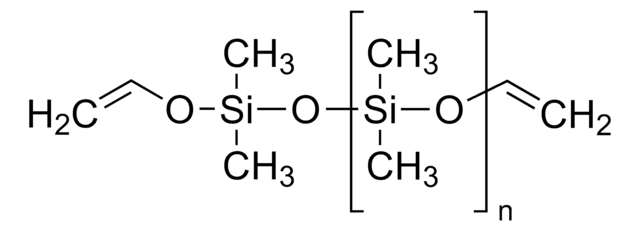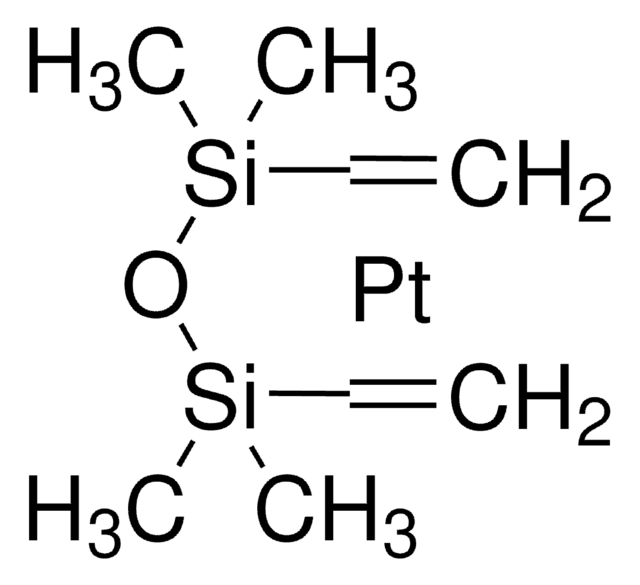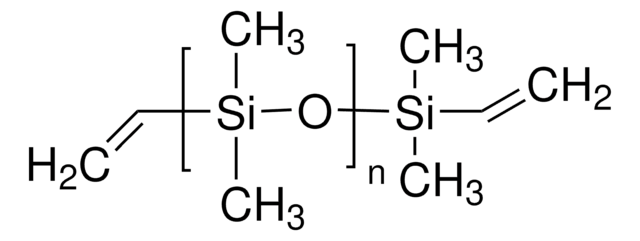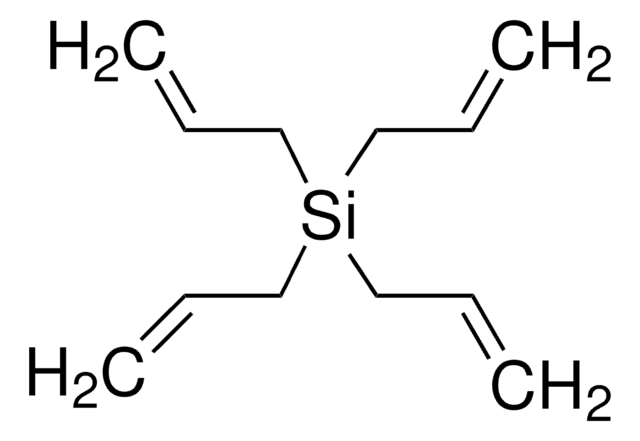396281
2,4,6,8-Tetramethyl-2,4,6,8-tetravinylcyclotetrasiloxane
Sinónimos:
2,4,6,8-Tetraethenyl-2,4,6,8-tetramethylcyclotetrasiloxane
About This Item
Productos recomendados
formulario
liquid
Nivel de calidad
índice de refracción
n20/D 1.434 (lit.)
bp
111-112 °C/10 mmHg (lit.)
mp
−44 °C (dec.) (lit.)
densidad
0.997 g/mL at 25 °C (lit.)
cadena SMILES
C[Si]1(O[Si](C)(O[Si](C)(O[Si](C)(O1)C=C)C=C)C=C)C=C
InChI
1S/C12H24O4Si4/c1-9-17(5)13-18(6,10-2)15-20(8,12-4)16-19(7,11-3)14-17/h9-12H,1-4H2,5-8H3
Clave InChI
VMAWODUEPLAHOE-UHFFFAOYSA-N
Descripción general
Aplicación
- Cyclic siloxanes conjugated with fluorescent aromatic compounds as fluoride sensors: This study explores the use of cyclic siloxanes conjugated with aromatic compounds for sensing applications, offering a pathway for academic chemists interested in sensor technology and fluorescence studies (N Prigyai et al., 2020).
- Synthesis, film morphology and performance of novel crosslinked polysiloxane with end-capped epoxy groups on cotton substrates: This article examines the chemical modification of cotton substrates using polysiloxane derivatives, which can be crucial for developing advanced textile coatings (L Hao et al., 2014).
- Stabilizing Li-rich layered oxide cathode interface by using silicon-based electrolyte additive: This research investigates the use of a silicon-based additive derived from 2,4,6,8-tetramethyl-2,4,6,8-tetravinylcyclotetrasiloxane to enhance the stability of lithium-rich cathodes, important for chemists working with energy storage technologies (T Huang et al., 2024).
Palabra de señalización
Danger
Frases de peligro
Consejos de prudencia
Clasificaciones de peligro
Repr. 1B
Código de clase de almacenamiento
6.1C - Combustible acute toxic Cat.3 / toxic compounds or compounds which causing chronic effects
Clase de riesgo para el agua (WGK)
WGK 1
Punto de inflamabilidad (°F)
190.4 °F - closed cup
Punto de inflamabilidad (°C)
88 °C - closed cup
Equipo de protección personal
Eyeshields, Gloves, type ABEK (EN14387) respirator filter
Elija entre una de las versiones más recientes:
¿Ya tiene este producto?
Encuentre la documentación para los productos que ha comprado recientemente en la Biblioteca de documentos.
Los clientes también vieron
Nuestro equipo de científicos tiene experiencia en todas las áreas de investigación: Ciencias de la vida, Ciencia de los materiales, Síntesis química, Cromatografía, Analítica y muchas otras.
Póngase en contacto con el Servicio técnico










